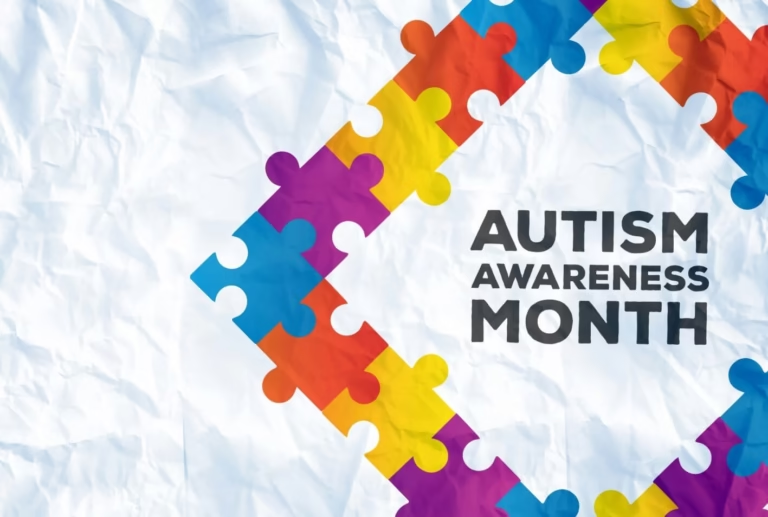Despite the laws, bullying at work is an unfortunate reality that many people with autism spectrum condition will encounter at some point in their lives.
Research and statistics on bullying and autism spectrum condition consistently shows that across society as a whole autistic people face significantly higher rates of bullying, abuse, and victimization compared to their neurotypical peers.
Shockingly, and very sadly, studies indicate that as many as 94% of autistic children and young people will experience some form of bullying growing up.
While the exact statistics on autism spectrum condition and bullying at work are harder to come by, it remains a serious concern. For example, in a survey conducted by the National Autistic Society and presented to the UK Government, nearly half (48%) of autistic individuals reported being bullied or harassed at work.
What these statistics show is an urgent need for greater awareness and stronger policies to protect people with autism, particularly in the workplace, where even today the prevalence of bullying often goes unnoticed and unaddressed.
In 2024, I received an autism diagnosis – a revelation that has deeply shaped my understanding of myself and my career. With 25 years of experience in the UK public sector, and having held senior leadership roles since 2017, I’ve faced a variety of challenges, both personal and professional.
Unfortunately, bullying at work has been one of them.
In this blog, I’m sharing the lessons I’ve learned from those experiences, offering insights into resilience, growth, and navigating adversity in the workplace. I hope that my journey can help other autistic professionals facing similar challenges.
In this post, we’ll take a closer look at autism and bullying at work, and share some practical tips and strategies on how you as an autistic professional can address and manage these challenging situations.

Understanding Autistic Workplace Bullying: What Makes it Different?
Autistic Spectrum Condition (ASC) affects more than 1 in 100 people. With a global population of 8.1 billion, that means at least 81 million people worldwide are autistic—roughly the same as the entire population of Germany!
Autism affects people in tons of different ways, and as anyone living with the condition will undoubtedly know, some of the main challenges can relate to social communication and interaction (like not getting smiles right), repetitive and restrictive behavior, meltdowns and shutdowns and oversensitivity to light, sound, taste or touch.
There’s no doubt that autistic individuals offer a wide range of strengths and talents that can make them highly valued employees. Many excel at spotting subtle details, they can possess exceptional memory skills, and can demonstrate intense focus and passion, all of which can be major assets in the workplace. They also tend to be honest and sincere in their interactions.
So, you might wonder—what’s not to like?
Yet despite these strengths, the unfortunate reality is that the unique challenges can make it harder to thrive in neurotypical environments that prioritize skills like emotional intelligence, effective communication, negotiation, collaboration, and adaptability.
These ‘normal’ workplace expectations can create barriers for autistic employees, often overshadowing their valuable contributions. It’s essential to recognize these challenges and work towards a more inclusive and supportive workplace for everyone.
Recognizing the Signs of Autism Bullying in the Workplace
So, what happens when you blend neuro-atypical traits with neurotypical workplace behaviors and an expectation of conformity? Well, surprisingly, it seems we aren’t that different from chimpanzees in this regard—despite the fact that we’ve lost most of our hair and learned to walk on two legs!
Just like humans, chimps in the wild form social networks and have their own cultural norms. Believe it or not, they’ve been observed shunning a group member whose behavior is seen as abnormal. This highlights how conformity can be a strong and primordial force in social dynamics, whether in the animal kingdom or in our workplaces.
Like our chimp cousins, in humans, bullying at work can sometimes be very overt, manifesting as shouting or physical aggression. However, compared to chimps, we’ve developed some much more subtle and sophisticated ways of behaving.
As a result, bullying in the workplace is more likely to be less apparent and sometimes even entirely covert, making it harder to recognize and address.
As an employee with autism, you may experience bullying through isolation or exclusion, where colleagues or managers deliberately leave you out. I’ve experienced this myself and I know first hand that it can be very subtle.
It can create feelings of social isolation and threaten your sense of belonging in the workplace. For instance, it might involve being excluded from lunch outings with the team or not being invited for drinks on Friday afternoons.
Another subtle form of bullying you might experience is being embarrassed or humiliated in front of others. This often comes disguised as a “joke” or playful banter, with you being told to “lighten up” and not take things so seriously.
Or you might face excessive criticism in group settings, where you are publicly called out and belittled in front of your peers.
Excessive impatience is another subtle form of bullying you might encounter. This can involve someone cutting into your discussion, frequently interrupting you, or displaying obvious signs of impatience and irritability—such as eye-rolling, constant sighing, or foot tapping.
Then there are constant mood swings that can contribute to a bullying atmosphere. If you work with someone who regularly explodes or becomes moody in an instant, it can leave you feeling like you’re walking on eggshells, always on high alert, and this can be stressful and exhausting to deal with.
You might encounter situations where impossible or unrealistic expectations are being set. Or when managers frequently shift their expectations, it can feel like a deliberate attempt at manipulation, making it difficult for you to succeed.
Bullying isn’t always top down or from peers, and if you’re a leader with autism, it’s very important to recognize that it can come from individuals in junior positions within the organization, a phenomenon known as “upward bullying.”
This behavior might stem from one person or a group of employees and can involve persistent disrespect, refusal to complete tasks, continual undermining of your authority, spreading rumors, or engaging in actions that intentionally damage your reputation as a manager.

Autism and Bullying in the Workplace – The Psychological and Emotional Toll
It’s estimated that the lifetime prevalence rates of anxiety and depression among autistic individuals are 42% and 37%, respectively. In contrast, these rates are about 20% and 16% for the general population.
Given these figures, it’s clear that the emotional toll of workplace bullying on individuals with autism can be immense. Since autistic individuals are at a much higher risk of suicide, the consequences of bullying can be tragic and should never be underestimated.
Bullying at work can leave you feeling utterly miserable. It often creates deep feelings of frustration and anger, leading to a significant loss of self-confidence and self-esteem. Sadly, this experience can fundamentally change who you are as a person.
It can have a real impact on your career progression, stifling your career growth and causing you to avoid potential opportunities and leave hostile work environments.
Having previously been on the receiving end of it myself, my own personal view, shaped through my own lived experience, is that there are times when it will be necessary to take action to protect yourself. The worst thing you can do is suffer in silence.
If you’re a person with autism and currently experiencing bullying at work, remember that you’re not alone, and it’s not your fault.
I’ll be sharing some tips on how you can support and protect yourself shortly.
How to Effectively Address the Bullying of Autistic Employees
As the voices of autistic employees increasingly shout about the prevalence and impact of bullying at work, it’s essential for employers to acknowledge their responsibility in fostering a safe and inclusive environment.
It’s vital for all staff, including those who are autistic, to feel empowered to bring their best selves to work.
Employers should go beyond standard anti-bullying policies and actively work to cultivate an autism-friendly culture that promotes acceptance and understanding of neurological differences.
It should be perfectly acceptable that Emily in accounts rarely makes eye contact in meetings.
It should be perfectly acceptable that Daniel in marketing tends to take things a bit too literally.
It should be perfectly acceptable that Madison in human resources sometimes comes across as blunt or straightforward in her e-mails.
We’re all different, and that’s what makes us human!
Considering that a significant portion (15-20%) of any workforce is likely to be neurodivergent, it really is essential for the majority to have at least a basic understanding of how this diverse group thinks, acts and behaves.
I believe that fostering greater harmony, collaboration and understanding brings about increased cohesiveness and better performance, leading to increased business profitability. Surely, neglecting this would be a missed opportunity for any business.
To truly support autistic employees, employers need to go beyond just having a basic understanding of autism and neurodivergence. It’s vital to actively shape workplace culture to combat bullying against autistic individuals.
This starts with senior leaders modeling inclusive behavior and recognizing as well as rewarding acts of inclusion among their staff.
Creating an autistic staff network can truly make a significant impact—especially when it’s backed by leadership and championed at the executive level.
I’m actively involved in building this within my organization, and I’ve seen firsthand how it benefits not only autistic individuals but also their managers. It fosters understanding, support, and a stronger, more inclusive work environment for everyone.
Additionally, enhancing training for managers on neurodiversity and establishing a structured approach to providing and monitoring reasonable accommodations can foster a more supportive environment for everyone.
By taking these steps, organizations can cultivate a culture where all employees feel valued and respected.

Strategies for Autistic Professionals Facing Bullying in the Workplace
1. Know Your Rights
It’s essential to familiarize yourself with your company’s anti-bullying policy and relevant bullying laws related to autism, as well as how to record and report potential incidents.
In the UK, the Health and Safety at Work Act 1974 mandates that employers ensure the health, safety, and well-being of their employees, which includes safeguarding against bullying and harassment. The Equality Act 2010 further protects autistic individuals from discrimination in the workplace.
In the US, the Occupational Safety and Health Act requires employers to maintain a safe working environment, which means protecting employees from hazards like bullying. The Americans with Disabilities Act also safeguards autistic employees from discrimination, including bullying.
As simple as it seems, just knowing your rights is a vital first step in advocating for yourself and creating a safer work environment.
2. Document Any Bullying Incidents
If you’re a person with autism experiencing bullying at work, then my advice would be to maintain a record of what’s happening.
It’s a good idea to document:
- The time and date the incident happened
- What exactly happened
- How you were made to feel
- The details of any witnesses
- Any supporting evidence, such as e-mails, text messages, etc.
You should start documenting any incidents as soon as you notice a pattern of bullying behavior. This is because it can be challenging to recall past events accurately or sift through records later on, so keeping detailed notes from the outset is important.
3. Build a Support Network
If you suspect that you’re being bullied, it’s crucial to take a moment to reflect—there’s a possibility that it might not be bullying after all. Before taking any action, a helpful first step is to discuss your feelings with someone you trust. This conversation can provide you with a fresh perspective on the situation.
As autistic individuals, we can sometimes misinterpret the intentions behind others’ actions or words. This advice isn’t intended to downplay what you may be experiencing; rather, it serves as an essential part of the self-protection checklist.
If you decide it is bullying, then consider turning to your union representative or your autistic staff network (assuming you have one) for support. You may also want to talk about what’s going on with family and friends, a trusted colleague, or if you prefer, someone from a bullying advice helpline that you can find online.
If the bullying is coming from your line manager, it’s important to approach the situation carefully if you decide to speak with another manager.
Before doing so, take some time to understand the dynamics within your workplace, as some managers may have loyalties to your line manager and prioritize the organization’s interests over yours.
4. Communicate Assertively to Combat Autism Bullying in the Workplace
In some situations, the individual you believe has bullied you may not fully realize the impact of their actions. If you feel ready to address the issue, having a conversation with them could be beneficial.
However, it’s essential to weigh the pros and cons before proceeding. Think about how likely they are to take your concerns seriously and respond positively, rather than becoming defensive or malicious.
If you choose to speak with them, here are some tips to keep in mind:
1. Clearly explain what they did and how it affected you.
2. Be firm and assertive, but avoid aggression.
3. Pay attention to your body language; try to be mindful of how it may come across.
4. Try to stay calm throughout the conversation.
5. Consider inviting someone to accompany you for support.
If addressing the matter in person makes you uncomfortable, you might opt to send your concerns via email or you could ask a trusted colleague to raise the issue on your behalf.

5. Seek Reasonable Accommodations / Adjustments
Reasonable accommodations provided under the Americans with Disabilities Act (ADA) in the U.S. and the Equality Act 2010 in the U.K. can significantly reduce the risk of bullying for autistic individuals in the workplace by fostering a supportive environment tailored to their needs.
I’ll delve deeper into the topic of reasonable accommodations and adjustments in a separate post.
In the meantime, consider formally requesting improvements in communication to minimize misunderstandings, the creation of a designated safe space for you to decompress, or the implementation of a buddy system to help you build relationships and feel supported.
6. Use Conflict Resolution Techniques
It may be that the other person is acting in a certain way towards you out of anger or frustration about something.
This in no way excuses their behavior, but before escalating it you might decide to wait and see if implementing some conflict resolution techniques can help to stop the bullying and turn the relationship around.
Wherever there are mountains there are valleys and wherever there are humans there is conflict. This is a certainty that always has and always will exist, regardless of autism.
Workplace conflict generally falls into two categories: personality conflict and substantive conflict.
Personality conflicts arise when individuals clash due to emotions like anger, stress, or frustration. In contrast, substantive conflicts are typically task-related and more tangible, such as a decision made by your manager or issues related to a colleague’s performance.
It’s essential to recognize that whatever type of conflict you’re experiencing—and what you maybe perceive as bullying—may not be linked to your autism.
Instead, it could stem from factors like unclear responsibilities, competition for limited resources or different self-interests. This is why having a support network and gaining a fresh perspective on the situation is so important.
If you find yourself engaged in conflict then remember to manage your emotions at all times, try to show empathy by imaging what the other person is thinking and feeling (as autistics we may need to take time out to reflect and think about this logically), practice active self-listening and acknowledge the other persons concerns or criticism.
At the end of the process, you might come to realize that the other person’s perspective is valid and reasonable. In that case, it’s important to take corrective action.
From my own experience, the best approach is to remain open to the possibility that your viewpoint may not be the most suitable for the situation and be willing to adjust your course accordingly.
7. Engage in Professional Development
When reading this section, please understand that I am in no way suggesting that people with autism are ever responsible for their bullying at work —bullying is unacceptable in any situation.
However, from my own experience, I believe that autistic individuals can benefit from professional development opportunities that provide the skills and knowledge to advocate for themselves and handle difficult situations more effectively.
For example, improving communication skills in areas like assertiveness and conflict resolution can help address issues before they escalate into bullying. It may also be valuable to invest in Emotional Intelligence (EQ) training.
This can help you better understand your own emotions and those of others, allowing you to recognize emotional cues, self-regulate, and show empathy, all of which can reduce the likelihood of conflict and, by extension, bullying.
For those in leadership positions, developing a strong understanding of leadership styles, management skills, team dynamics, and effective delegation can help prevent upward bullying and create a more supportive work environment.
8. Strengthen Your Workplace Relationships
Building relationships in the workplace can be a challenge for autistic individuals when it comes to meeting neurotypical expectations. However, this doesn’t mean you can’t create opportunities for friendship.
The most important advice I can offer is to avoid a defeatist mindset when it comes to making connections.
Don’t let your autism convince you that you’re incapable of forming friendships. You absolutely can build relationships; it just might take a bit more effort. Remember, the key to any successful relationship is communication. By simply understanding this, you’re already halfway there.
Communicate. Communicate. Communicate.
Take the initiative to spend time around your colleagues. Seek them out—visit their offices, stop by their desks, or join them during breaks, even if you find it a little bit uncomfortable. You never know, you might start to enjoy it!
Show genuine interest in their lives, and be open about your own. Letting others see your vulnerable side can foster deeper connections.
Some might refer to this as “masking,” but I see it as taking necessary steps to achieve happiness and success in the workplace.
When you cultivate workplace relationships, even just a few with people who truly understand you, you equip yourself to handle bullying if it arises. With a network of allies, you create a buffer against workplace bullying and make it harder for perpetrators to isolate or target you as a person with autism.
Additionally, having supportive colleagues means you’ll always have someone to turn to for advice and assistance when you need it most.
Never underestimate the power of workplace relationships, and don’t allow your autism to make you doubt your ability to connect with others. You’ve got this!
9. Protect Your Mental Health From Autism Related Bullying at Work
For those of us with autism, one effective way of lessening the impact of bullying in the workplace is to implement stress management techniques.
Regular exercise and time spent outdoors are crucial for maintaining mental well-being, so try to establish a structured routine that integrates these activities into your daily life. This structure can help make self-care feel more manageable rather than overwhelming.
Additionally, consider exploring creative outlets like drawing or painting. These activities can provide a welcome distraction from workplace stress and allow you to express your feelings in a constructive way.
Mindfulness and meditation are also valuable tools for staying present in the moment and alleviating anxiety. By incorporating these techniques into your routine, you can foster resilience and better cope with challenging situations at work.

10. The Role of HR in Managing Autism Related Bullying at Work
At some point, you may feel the need to report the bullying you’ve experienced. It’s generally advisable to start with an informal approach. Refer to your workplace bullying policy for guidance on how to proceed.
If your organization lacks a policy, consider reporting the issue to someone else, such as a Human Resources representative, or a union representative.
If your informal attempts to address the bullying are unsuccessful, it’s time to file a formal grievance with your employer. They are obligated to take any complaints of bullying seriously and should investigate the matter promptly.
Should the situation escalate to the point where you feel compelled to leave your job due to the employer’s failure to address the bullying, you may have grounds for a claim of constructive dismissal at an employment tribunal.
If you find yourself in this situation, it’s crucial to seek professional legal advice to navigate your options effectively.
Conclusion: Creating a Long-Term Solution for Autistic Bullying in the Workplace
In conclusion, bullying at work is a sad reality that may individuals with autism are forced to live with, with profound implications on their career development and emotional wellbeing.
Having been at the receiving end of it myself, then if you’re a person with autism experiencing bullying in the workplace I hope you find these proactive steps and strategies useful.
Remember that bullying laws exist to protect people with autism and that there are steps you can take to protect yourself.
Your thoughts and experiences matter! If you have any questions, insights, or personal stories related to workplace bullying or supporting autistic individuals, please share them in the comments below.
Let’s continue the conversation and support one another in creating a more inclusive workplace for everyone.
Frequently Asked Questions
Click here to view
How Can I Tell if I’m Being Bullied at Work as an Autistic Employee?
Signs of bullying can include exclusion from social activities, frequent interruptions, excessive criticism, and setting unrealistic expectations. More subtle forms may involve being belittled under the guise of jokes or dealing with unpredictable mood swings from colleagues. Documenting each incident and reflecting on the behavior can help you better assess the situation.
What Should I Do If I’m Experiencing Bullying at Work Due to Autism?
Start by knowing your rights under laws like the Equality Act 2010 (UK) or the Americans with Disabilities Act (US). Document every incident in detail, speak to someone you trust for perspective, and consider seeking support from HR, a union representative, or your autistic staff network. In certain cases, requesting reasonable adjustments can help foster a more supportive work environment.
Can I Ask for Special Accommodations to Prevent Bullying at Work as an Autistic Employee?
Yes, autistic employees are entitled to reasonable accommodations. These might include improved communication practices, a buddy system for social support, or a designated safe space. Employers are legally obligated to provide adjustments under laws like the Equality Act 2010 and the Americans with Disabilities Act to help foster a supportive environment.
Why Are Autistic Employees More Vulnerable to Workplace Bullying?
Autistic employees may face challenges with social communication and navigating neurotypical expectations. Misunderstandings, rigid social norms, or perceived differences can make autistic individuals more vulnerable. However, awareness and education can foster understanding and reduce bullying by promoting an inclusive workplace culture.
How Can I Improve My Resilience to Workplace Bullying as an Autistic Individual?
Building strong workplace relationships, developing communication and assertiveness skills, and engaging in emotional intelligence (EQ) training can help reduce conflict and better equip you to handle challenges. Additionally, seeking creative outlets, regular exercise, and mindfulness practices can help manage stress and protect your mental health.






















